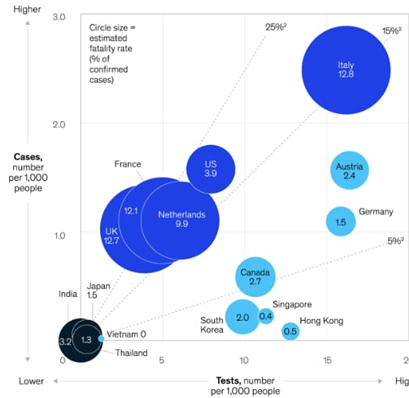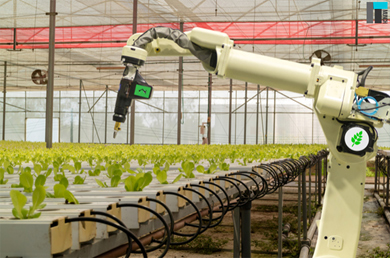Faculty member: Dr. Moumita Gangopadhyay, Associate Professor, Department of Biotechnology, School of Life Science and Biotechnology, Adamas University
Scholar member: Ms. Samanwita Das and Ms. Arunima Saha, Department of Biotechnology, Adamas University
Student members: Indrajit Ghosh, Surjayuti Paul, Dipanwita Palai, B.Sc. LLB, 2nd Semester, School of Law and Justice, , Adamas University
The novel Coronavirus Disease 2019 (COVID-19), is one of the perilous global health concerns and worldwide panic since December 2019 and the reason is the Severe Acute Respiratory Syndrome Coronavirus-2 (SARS-CoV-2). Meanwhile then till now, COVID-19 has spread all over the world covering every continent and the World Health Organization (WHO) has declared a Public Health Emergency of International Concern on 30 January 2020 following the announcement of a worldwide pandemic from 11th March 2020. Unfortunately, there are no specific treatments for this highly transmissible disease, though few old repurposing drugs are used by medical practitioners which showing many side effects on human health. From a research standpoint, researches are very curious about how to provide the best protection to the public before a vaccine can be produced available. Plants have offered an innumerable of possibilities to cure human diseases historically and its ability to treat can be drawn back to 6000 years. They also have tremendous metabolic potential, which has enabled the generation of medicinal compounds that have served to ameliorate symptoms of many diseases or to treat them, but many of which are still prevalent today. Henceforth, by repurposing these valuable Indian medicinal plants, more treatment options, and innovative preventive measures can be penned down for their role in combating this viral transmission. With the COVID-19 outbreak, to meet industrial demand the use of wild plants as herbal ingredients in the formulations for Traditional Herbal Medicine, as well as other herbal-based nutraceuticals all over the world, is expected to increase dramatically. Generally, these herbs are used for significant benefits for pre boosting our innate immune system which acts as potential arsenal if anyone encounters viral attack. Taking these herbs raw or as the formulated product improves various physiological activities including decreasing body temperature, cough and breathing difficulties, decreasing dosages of corticosteroids, improving the absorption of pulmonary infiltration, and improving quality of life.

COVID-19: why the sustainability of medicinal plants trade matters
In this overwhelming situation, the medical health emergency and unavailability of specific treatment protocol nowadays demand for medicinal plant possessing potentiality against COVID-19 is increasing worldwide due to growing recognition, being non-narcotic, no side-effects, a less expensive and less risk-prone route to drug development. The indiscriminate collection to meet ever-growing market demand has resulted in gradual disappearance from its natural habitat and at present, its number is highly reduced in the wild and enlisted as endangered species. Henceforth to save important genetic resources, there is no way but to produce the plant species out the site of their habitat. In this context, organized cultivation is a well-monitored area with suitable maintenance is the utmost prioritized research area today. The” greening” of this strategy is key to ensconce the long-term anointing of aromatic and medicinal plant species, that could build the basis of different medicinal formulations. Nowadays, current research focuses on the possible efficacy of herbal and ayurvedic medicines to support health care, but there is a lack of care to ensuring the sustainability of supply chains, providing the herbal ingredients, in particular those sourced from the wild. The future emergence of plant materials to support human health is dependent on prioritizing the sustainable use and conservation of their mother species in the long-term.
Interdisciplinary knowledge of engineering with plant biotechnology may find a possible solution
Medicinal plants that are under an organized cultivation system require more labor which faces a great challenge due to lockdown and maintains social distances. the plants that grown in the cultivation field are suffering from the lack of maintenance, i.e. they are not getting water which was sprayed regularly by the maintenance workers. If this situation doesn’t recover immediately or the lockdown continues, then plants will have to suffer a lot for this also. The farmers will not be able to take care of their plants, they won’t be able to provide fertilizers, water plants to protect them from harmful insects & bacteria. Ultimately, the production will be severely affected which ultimately affects human health as healthy raw materials only produce hygiene products.
Following are the putative solutions to meet with the aforementioned challenges:
ARTIFICIAL INTELLIGENCE –Artificial Intelligence and Automationtechnologies can reflect a significant role in this context. It is useful for getting more production from the land during the time of using resources more sustainably, which can help farmers further, hence they can do monitoring of soil, plant, and the entire land. They can also provide data of the land to authorities that can help them predict the condition of plants and soil. AI systems can also help improve the irrigation quality and accuracy by detecting the diseases in plants, pests, and more.

Image Reference : https://www.slideshare.net/Student_Via/ai-in-farming
If we look into some recent reports we can see, Blue River Technology developed a robot called See and Spray, which uses computer vision technologies to monitor and preciously spray weedicide. Besides this, a Berlin-based agriculture technological start-up has developed an application, named Plantix, which uses image recognition to identify nutrient deficiencies and defects in the soil through images.
DRONES – Rapid advances in the spread of the technology are now paving the affordability of the drone which in terms fuelling an ever-widening range of current uses; including aerial mapping, plant health monitoring, Ariel sprinkling, etc. A recent report disclosed that, for the large-scale drone survey mapping, the eBee fixed-winged drone has been used. It is the lightest and most portable one, which helps to fly further and longer at the resolution.
SMART IRRIGATION SYSTEMS – Further, irrigation can be done by using some useful processes such as Ram Pump, agricultural sprinkler, Nelson irrigation, etc.

Image Ref: https://www.elprocus.com/?s=SMart+Iot
Several tech giants as well as start-ups are trying to fight agricultural & planting issues by creating irrigation and weather technology solutions. Microsoft precision planting, for instance, attempts to democratizing artificial intelligence worldwide.
Production and Protection of Medicinal Plants need bridging knowledge between Law and Plant Biotechnology
Endangered Plant Protection Laws of India has one of the richest, oldest, and most diverse cultural tradition deeply associated with the use of various parts of the medicinal plant for curing several diseases. Due to the growing demand of medicinal plant produce at national and international level made the availability of many species of the wild medicinal plant under the threshold of extinction. The adverse effect of various anthropogenic activities likes destruction and loss of forest habitat; overexploitation of forests for commercial purposes and illegal trade in precious medicinal plant produce made the present position very alarming.

Awareness about few important laws in medicinal plants are discussed as follows:
Forest Act, the Wildlife (Protection) Act: The enactment of the Forest Act, 1930 has commenced centralized and commerce-oriented management of natural resources, that strictly controls the ingress of local communities to forests. The Forest Act considers wild trees, timber, and forest produce as an important source of revenue. Along with it some important herbs and medicinal plants continue to be regarded as minor forest produce. The Government has wide powers to regulate the sale and removal of trees and forest produce. In addition to the exploitative scheme envisaged under the Forest Act, the ever-increasing and unbridled heartless exploitation of forest resources even after the colonial rule has been attributed to the implementation of misguided economic policies focussing exclusively on planning for productivity.
The Act is modeled on the lines of the central Wild Life Protection Act, 1972 which itself has borrowed the model of protected areas from the west. The worst effect of de-recognition of the local people and their traditional practices is that they have lost a considerable part of their very large store of knowledge related to wild biodiversity on the one hand while the population of certain species of wildlife has considerably gone down due to overexploitation, poaching, and habitat destruction.
Convention on International Trade in Endangered Species of wild flora and fauna (C.I.T.E.S.): All CITES App I & App II plant species obtained from the wild is prohibited for export from India. Only cultivated/ artificially propagated plant species listed under App. II is allowed for export under cover of CITES export permit and Legal Procurement Certificate (L. P. C.) or certificate of cultivation from the designated authorities. Export of following vulnerable and endangered plant species requires ‘certificate of cultivation’ or Legal Procurement Certificate’ from the Forest Department’s entitled authorities as per MOEF circular dt. 4.10.2000.
Although, there is legislation enacted to protect the plant species available in India, very few people are aware of it. In “wildlife protection act 1972” itself there is a separate provision enlisted in schedule VI for plant species by Govt. of India. Besides the above, there are many laws in India for protection of wild flora out of which convention on international trade in endangered species of wild flora & fauna (CITES); Foreign Trade (Development and Regulation) Act 1992; Export-Import Policy; Plant Fruit and seeds (regulation of import into India) order 1989 and convention on Biological Diversity (CBD) are the main laws.










